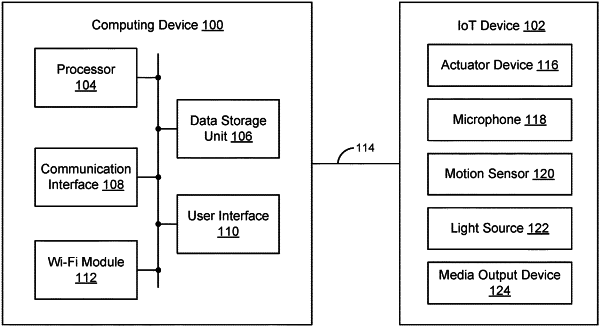| CPC H04N 21/44218 (2013.01) [G06F 1/3231 (2013.01); H04N 21/42203 (2013.01); H04N 21/42222 (2013.01)] | 18 Claims |

|
1. A method comprising:
using a Wi-Fi module of a computing device to detect that an end-user has entered a monitored environment of the computing device, wherein the computing device is separate from, and communicatively coupled over an Internet of Things (IoT) network to, a battery-powered IoT device; and
in response to detecting that the end-user has entered the monitored environment of the computing device, causing the IoT device to switch from operating in a standby mode to instead operating in an active mode, wherein operation in the standby mode comprises a mode in which the IoT device consumes less power than when operating in the active mode, wherein:
the IoT device comprises an actuator device,
operation in the active mode comprises a mode in which the IoT device is configured to perform a first action in response to detecting actuation of the actuator device,
operation in the standby mode further comprises a mode in which the IoT device is configured to perform a second action, different from the first action, in response to detecting actuation of the actuator device, and
the second action comprises switching from operating in the standby mode to instead operating in the active mode.
|